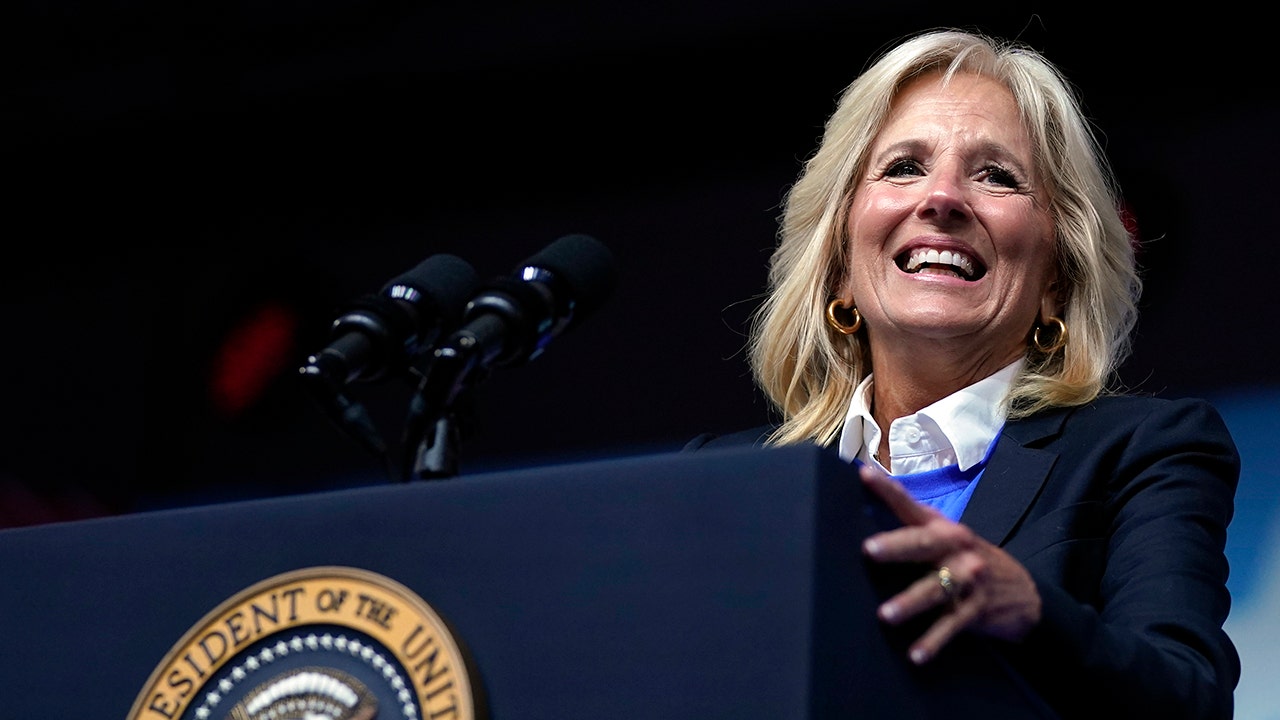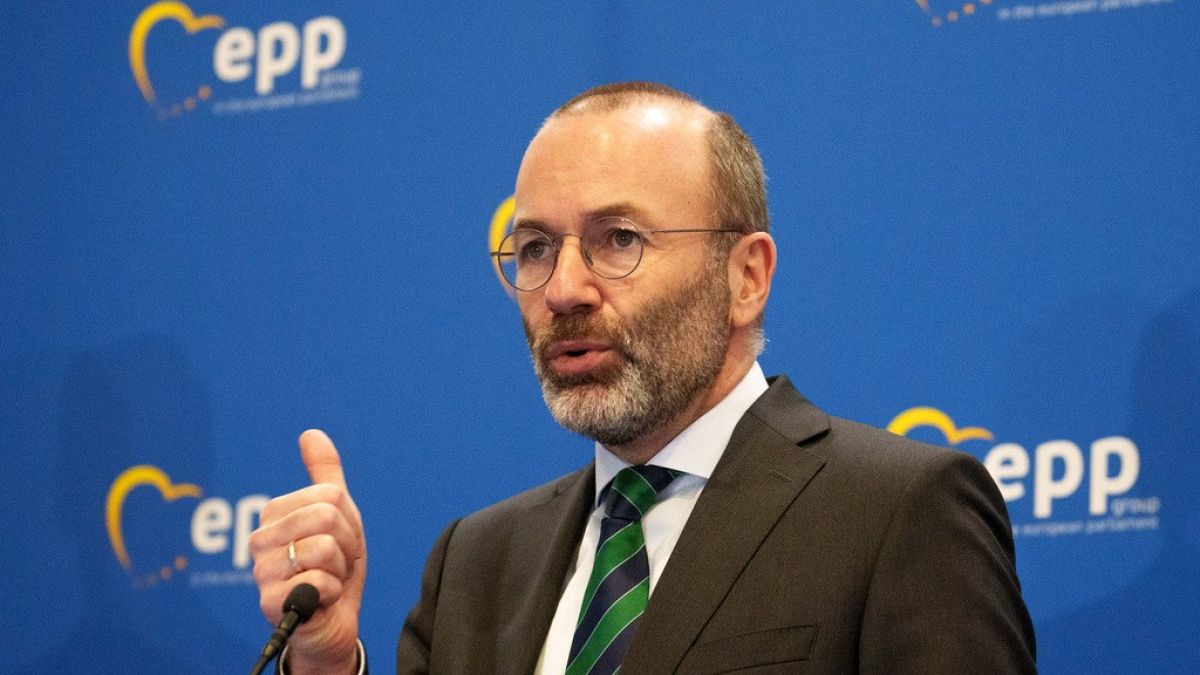California
2 West Coast states are the first to depart from CDC’s COVID isolation guidelines

The remaining COVID-19 guidelines that still exist around the US are starting to fade away as we approach our fourth year of living with the pandemic.
Earlier this month, California’s Department of Public Health issued a formal order to change existing COVID-19 control and prevention guidelines, reducing isolation expectations for infected individuals. The introduction of the new rules, which allow people testing positive to return to public life if they are not showing symptoms, makes California the second state to break from CDC guidelines and do away with specific isolation times, following behind Oregon, which made such changes back in May.
In California’s order, issued on Jan. 9, the changes were attributed to the reduced impact of COVID compared to past years, the availability of treatment and the changing expectations to keep people most at-risk safe while posing minimal disruptions to the public.
Fact check: CDC data shows levels of COVID-19 in wastewater, not water supply
Oregon and California limit quarantine
Oregon and California are the first states to depart from the guidelines put forth by the CDC, which still recommends at least five days of isolation after first testing positive for COVID or experiencing symptoms.
Instead, Oregonians and Californians are no longer asked to isolate for a specified period after contracting COVID. Those who experience symptoms can return to work or school after just 24 hours of being fever-free, so long as symptoms are “mild and improving.” Those who experience no apparent symptoms are no longer required to isolate at all, according to the state policies.
However, both states still suggest taking precautions if you have been infected, even if you don’t have to stay home anymore. It is still advised that you avoid contact with high-risk people and mask when around others for 10 days after testing positive or becoming sick.
“We are now at a different point in time with reduced impacts from COVID-19 compared to prior years due to broad immunity from vaccination and/or natural infection, and readily available treatments available for infected people,” Director of the California Department of Public Health Dr. Tomás Aragón said in the state order.
“Our policies and priorities for intervention are now focused on protecting those most at risk for serious illness while reducing social disruption that is disproportionate to recommendations for prevention of other endemic respiratory viral infections.”
What does the CDC recommend?
The CDC guidelines still advise isolation with or without symptoms, regardless of vaccination status.
According to the guidelines, anyone who suspects they may have COVID-19 should begin isolating, even if they have not yet tested. Once testing positive, it is advised that you isolate for five days, as you are most likely to be contagious during that time.
If you test positive without symptoms but develop symptoms during the 10 days following, the isolation clock restarts. If at the end of the five days you are fever-free for 24 hours without the assistance of medication and your symptoms have improved, you may end isolation. However, if you are still experiencing symptoms with no improvement, you should wait until you are fever-free for 24 hours and/or your symptoms are improving.
People who experience more serious symptoms of shortness of breath or difficulty breathing should isolate for an additional five days, making the total quarantine time 10 days. People who had a severe illness that resulted in hospitalization or who are immunocompromised should consult their doctor about treatment plans and isolate for at least 10 days as well.
Is COVID surging again?: Surging COVID-19 cases detected in wastewater: Could it signal a new wave?
During isolation periods, the CDC suggests you:
- Wear a high-quality mask if you must be around others at home and in public.
- Do not go places where you are unable to wear a mask.
- Do not travel.
- Stay home and separate from others as much as possible.
- Use a separate bathroom, if possible.
- Take steps to improve ventilation at home, if possible.
- Don’t share personal household items, like cups, towels, and utensils.
- Monitor your symptoms. If you have an emergency warning sign (like trouble breathing), seek emergency medical care immediately.

California
Landlines may be saved in California – for now. What this means for consumers nationwide

Traditional landlines could disappear soon. Here’s what we know.
Millions of Americans still use landline phone but phone companies are looking to drop the service. Here is what we know.
California utility regulators are proposing rejecting a request by AT&T to eliminate its responsibility to provide traditional landline phone service. That could have implications nationwide, a consumer advocate said.
Fewer telephone companies are offering basic landline phone service as the utilities say the copper-wire infrastructure is old and expensive to maintain and demand for landline phone service is low as consumers move to mobile and other services.
But consumer advocates nationwide have cried foul, saying basic landline service is important for the country’s most vulnerable, including senior citizens who don’t want to rely on cell service, consumers who can’t afford cellular service and those in rural areas that may not have good access to cell or broadband internet services.
What happened in California?
Earlier this year, the California Public Utilities Commission opened public comments on an application by AT&T to waive its responsibilities to be what’s called “Carrier of Last Resort” (COLR), meaning the utility has to offer the copper-wire landline service.
The utility and many of its peers have been petitioning state utility commissions and legislators, asking to be relieved of the task.
On Friday, Administrative Law Judge Thomas J. Glegola wrote a decision proposing that the Caifornia commission reject AT&T’s waiver. The proposal will be voted on by the commission at its June 20 meeting. The judge also proposed that the commission look at the rules outlining the carrier of last resort service obligations.
In a press release announcing the upcoming vote, the commission said public response to AT&T’s request “was extensive with over 5,000 public comments received into the record and eight Public Forums held in-person in three cities and virtually across the state, drawing more than 5,800 attendees.”
The proposed rejection “underscores the critical importance of ensuring universal access to essential telecommunications services for all Californians,” the commission said in its statement. “As the designated COLR, AT&T plays a pivotal role in providing reliable telephone service to communities across the state.”
The commission added that while the communications company said mobile wireless and other services could fill the void, “the CPUC found AT&T did not meet the requirements for COLR withdrawal. Specifically, AT&T failed to demonstrate the availability of replacement providers willing and able to serve as COLR, nor did AT&T prove that alternative providers met the COLR definition.”
Public commenters also highlighted the unreliability of voice alternatives such as cell service or Voice Over Internet Protocol services (VoIp) which are internet phone providers, the commission said.
What is AT&T’s response?
AT&T in a statement said it was disappointed in the proposed rejection. Competition for other more reliable phone alternatives is robust, said Marc Blakeman, president of AT&T California. Blakeman said there are less than 5% of households in California that AT&T serves who still use copper-based landline phone service.
“We are disappointed by the CPUC’s proposed dismissal of our application for relief from Carrier of Last Resort (COLR) regulation, as we’d hoped the commission would allow us the opportunity to demonstrate why the number of options for voice service available to customers make the COLR obligation unnecessary,” Blakeman said.
Not surprisingly, Blakeman said, no providers were interested in bidding on the carrier of last resort service “with a declining number of customers given the competitive options available in today’s marketplace. We remain committed to keeping our customers connected to voice service and will continue working with state leaders on policies that allow us to bring modern communications to Californians.”
AT&T made the request in California for a waiver and has also lobbied successfully for legislative reform in 20 other states, which eliminated the utility’s requirement to provide traditional landline service.
Blakeman said during climate disasters, when staying connected is essential, AT&T’s fiber network is more reliable “than our outdated copper network” and that old copper cables take significantly longer to repair following weather events, in some cases taking weeks to dry due to damage from extensive rain and flooding.
Consumer advocates point to the need for electricity for most alternatives to traditional landlines and note that when there is no electricity, consumers can still use their landlines.
Is the proposed rejection expected to pass?
While the rejection is a proposal and still needs to be approved by the commission, Regina Costa, telecommunications policy director for The Utility Reform Network (TURN) in California, said she fully expects the board to approve it.
“What AT&T really wants is to stop providing essential telecom service to 99% of its service area, without providing a shred of evidence that there are real alternatives. This includes many areas threatened by wildfires, earthquakes, floods and power shutoffs,” Costa said in a press release. “If AT&T gets its wish, it would significantly jeopardize public safety.”
In an interview with USA TODAY, Costa, who is also chair of the telecommunications committee for the National Association of State Utility Consumer Advocates, said California’s proposed rejection of the landline waiver is on top of a recent rejection in Utah for another utility to waive its obligation to provide landlines.
“I think it’s very important for consumers nationwide,” Costa said. “I think that would give other states the impetus to look at the same thing.”
Loss of landlines? Phone companies want to eliminate traditional landlines. What’s at stake and who loses?
When deregulation took place in telecom, the assumption was there would be lots of alternatives to landlines, she said.
“I think California and Utah are stepping up to the plate and saying no, we need to think about this carefully,” she said. “We need to make sure that all of our people have service. How do you let the largest carrier in a state walk out the door and the markets that they want to abandon are the ones that are most at risk?”
Betty Lin-Fisher is a consumer reporter for USA TODAY. Reach her at blinfisher@USATODAY.com or follow her on X, Facebook or Instagram @blinfisher. Sign up for our free The Daily Money newsletter, which will include consumer news on Fridays,
here.
California
The surprising force stalling climate progress: California restaurants

By Ben Elgin | Bloomberg
In the fight to ratchet down climate emissions and soothe the most dangerous effects of an overheating planet, one of the most withering setbacks in recent memory wasn’t delivered by the oil industry or coal excavators, but, rather, a group of restaurants in California.
When Berkeley became the first city in the country to ban the extension of gas pipes into new buildings, it targeted a contentious source of climate pollution. The combustion of gas inside of homes and businesses to power things like furnaces, water heaters and stoves accounts for 9% of California’s emissions, or 33 million metric tons of heat-trapping gases per year, equivalent to the entire climate footprint of Hong Kong.
With the US gas system continuing to expand – the industry connects one new customer to the gas grid each minute – Berkeley was the first to try to stop this climate problem from becoming bigger. Since it enacted its ordinance in 2019, more than 100 cities, counties and states across the country have followed.
Today, these efforts are reeling. The California Restaurant Association took the city to court in November 2019, arguing that its 20,000-plus members preferred cooking with a gas flame and that, even though the rule wouldn’t require changes to existing buildings, such an ordinance would limit their options when opening new locations. Moreover, they argued, federal energy laws preempt these aggressive local ordinances.
After a see-sawing legal battle, the restaurants prevailed. When Berkeley’s last-ditch request for a rehearing was rejected earlier this year, the city in March canceled its ordinance, prompting a jubilant CRA to declare it a “significant triumph for chefs and restaurateurs.”
Now, Bloomberg Green has learned, a coalition of gas companies and their supporters are planning to wield the restaurants’ legal victory to beat back similar rules across the western US. This puts restaurants directly at odds with a hospitable planet, as there’s no feasible pathway to avert catastrophic warming if places like California don’t sharply reduce gas combustion in buildings, according to climate experts.
“It’s rather irritating to have restaurant owners put their heads in the sand,” says Robert Howarth, a professor of ecology and environmental biology at Cornell University. “We have to move away from natural gas. The planet demands it.”
This is not the first time restaurants in California have sided with industry giants in an epic battle over public health. In 1987, a year after US Surgeon General C. Everett Koop warned second-hand smoke was causing lung cancer in healthy nonsmokers, Beverly Hills became the first city in the state to ban smoking inside restaurants. Several nearby towns followed with similar proposals.
Restaurants howled in protest. Some eateries in Beverly Hills complained their sales plummeted overnight by nearly a third, though tax records later showed no such drop had occurred. Within months, the Beverly Hills city council walked back its rule.
These public health battles, nearly four decades apart, share another striking resemblance: Restaurant groups served as the public face for both efforts, while they worked alongside hidden powerful interests.
In the smoking fracas, millions of cigarette-company documents later unearthed during litigation revealed the tobacco industry recruited and worked closely with restaurant groups around the country, including CRA, to fight smoking restrictions. The industry even surreptitiously funded and created the Beverly Hills Restaurant Association, which led the successful pushback against the state’s first ban.
“Public health advocates need to understand that, with rare exceptions, when they talk to organized restaurant associations, they are effectively talking to the tobacco industry,” warned researchers at the University of California San Francisco in a 2002 paper.
In today’s fight over gas, CRA also hasn’t acted on its own. It refuses to say who paid the legal bills for its Berkeley suit. As a nonprofit, it must make its tax filings public. In these forms, nonprofits are supposed to disclose contractors to whom they paid at least $100,000 in the previous year. CRA regularly lists law firms working on its behalf, such as those litigating Covid-related restrictions. But the restaurant group has never disclosed a payment to Reichman Jorgensen Lehman & Feldberg LLP, the law firm that spearheaded the Berkeley case.
The Berkeley lawsuit topped the $100,000 threshold. When Sarah Jorgensen, the law firm’s founding partner, spoke at a National Propane Gas Association board meeting in February, she was asked what a legal challenge of this sort would cost, according to a recording of the discussion heard by Bloomberg Green. After an NPGA executive estimated it would require $300,000 to $400,000 to take a case to court and “another couple of hundred thousand” for appeals, Jorgensen said “we definitely spent more than that on Berkeley.” In a written response to questions, Jorgensen declined to say who paid their legal bills.
So who picked up the tab? SoCalGas, the nation’s largest gas utility whose territory covers 24,000 square miles from the Mexican border to central California, paid Reichman Jorgensen more than $4 million between 2020 and 2022, according to its regulatory filings and as reported last year by the Sacramento Bee. When compelled by state regulators to explain some of these payments, SoCalGas denied it was for the Berkeley case, but rather to examine legal issues such as “government actions potentially affecting natural gas service” and “whether they might be preempted by federal law” (which was the core issue in the Berkeley case).
Meanwhile, SoCalGas and San Diego Gas & Electric, both subsidiaries of energy giant Sempra, combined to contribute over $1.3 million to CRA and its charitable arm since 2019, a sharp uptick from previous years. In a statement, SoCalGas said that it didn’t fund the Berkeley suit and its contributions went to the restaurant association’s charitable arm, which supported eating establishments that struggled during the pandemic.
Some close watchers of the utility, though, don’t buy it. Given the payments funded an examination of “the very same legal issues raised in that litigation,” declared the Public Advocates Office, an independent watchdog for the state’s utility regulator in a filing last year, “it strains credibility to suggest that the utility did not fund research that supported the California Restaurant Association’s litigation.”
Matt Vespa, a senior attorney at Earthjustice and lecturer at the University of California Berkeley School of Law, who dug through a thicket of utility filings to unearth many of the gas industry payments, agrees. “It’s clear to us that SoCalGas underwrote the lawsuit,” he says. (SoCalGas called such claims “irresponsible.”)
Jot Condie, chief executive officer of CRA, has dismissed such questions, telling one news outlet back in 2019 that it amounted to “looking for monsters under the bed.” He declined to be interviewed by Bloomberg Green and would not say who funded the suit, but in written responses to questions, Condie rejected parallels to the indoor-smoking fight. “If comparing these two dissimilar issues decades apart is intended to portray the association as doing the bidding for other interests, it’s an inaccurate and misleading portrayal of this association’s 118-year history,” he said.

He added that “the decision to fight the illegal city ordinances was CRA’s alone,” and that it supports California’s climate goals. “There is a way to transition to a greener economy without violating federal energy law and harming the restaurant community,” he said. When asked for details on what such a low-carbon pathway would look like, he declined to provide specifics. “The emphasis must be on a transition,” he said. “No economy, industry, or business can be expected to flip a switch overnight.” (Berkeley’s rule wouldn’t have required any changes to existing restaurants.)
For longtime tobacco watchdogs, like Joelle Lester, executive director of the Public Health Law Center at the Mitchell Hamline School of Law, it amounts to more than a striking case of déjà vu. They’re concerned the tactics that once slowed indoor-smoking bans will also stymie efforts to solve climate change.
“We started realizing how closely the gas companies’ tactics mirror Big Tobacco, almost like they’re following a script,” says Lester, whose group recently published a report examining the similarities. “We thought it was important to sound the alarm that there’s this other industry doing really the same thing.”
Gas wasn’t always a widely viewed climate villain, with the Center for American Progress, a left-leaning think tank, even heralding it 15 years ago as a “bridge fuel” to a cleaner future. When burned, it produces about half the heat-trapping emissions of coal. In the mid 2000s, new drilling techniques like fracking unlocked huge quantities of cheap gas. Coal plants couldn’t compete on price and began shutting down.
But as many studies have shown, the climate harms from gas are extensive. When methane is unearthed and delivered to homes and businesses through thousands of miles of pipelines, some of the gas escapes. Because unburned methane causes more than 80 times the warming as an equivalent amount of CO2 over two decades, these leaks nullify much of the fuel’s improvement over coal.
Governments today are pushing for dramatic shifts away from gas. Lawmakers in the European Union agreed in April to abolish fossil fuels in new construction by 2030, while requiring retrofits for the least-efficient buildings. New York State, meanwhile, enacted a rule last year to ban gas in most new construction. Reichman Jorgensen filed a suit in October to block it on behalf of a slew of plaintiffs including homebuilders and gas companies. (The New York State Restaurant Association says it’s concerned about the rule but didn’t join the suit because restaurants are exempt from the ban.)
The grim outlook for gas has sparked energetic pushback by restaurant groups around the country. In the District of Columbia, where the combustion of gas in buildings contributes 22% of its climate footprint, the Restaurant Association of Metropolitan Washington emailed members in February warning them of “misguided energy policies” that would limit their access to gas. It urged them to become advocates for their local utility, Washington Gas, describing it as a “trusted partner to the business community for over 175 years.” The utility recently fought a rule that would fund retrofits and electrification of homes for 30,000 lower-income residents. (RAMW chief executive Shawn Townsend declined to comment.)
This issue is supercharged in California, where homes and businesses are more reliant on gas than in any other state. That’s why state regulators, when crafting a blueprint to reach California’s goal of a 40% cut in emissions by 2030, stressed the need to shrink the state’s gas system and halt expansion of gas pipes into new buildings.
“If we’re going to have a chance of slowing global warming, we have to deal with the buildings problem,” says Rafael Mandelman, a San Francisco supervisor who authored a rule requiring new buildings in the city to be all-electric beginning in 2021. “It’s an imperative if human beings are going to live comfortably on this planet.”
The gas industry warns these policies will hike customer bills and increase the possibility of electric blackouts. “The choice available to us isn’t how to convert our nation’s energy system away from natural gas but how the customers can continue to benefit from the country’s abundance of affordable natural gas and ensure reliability and resiliency,” said American Gas Association chief executive officer Karen Harbert in a written statement.
Many gas companies also contend the harmful impacts of their fuel can be alleviated by mixing in vast quantities of methane captured from dairy farms and landfills. This so-called “renewable natural gas” counts less towards climate change than fossil gas, because it comes from sources that likely would have vented the methane into the atmosphere.
But state officials aren’t nearly as optimistic. Utility regulators in Massachusetts, for instance, who are examining the future of their gas system as the state tries to slash emissions by 90%, recently rejected proposals by gas companies to bank heavily on RNG, highlighting concerns about its cost and availability. The California Energy Commission came to a similar conclusion in a 2021 report, finding there wasn’t nearly enough RNG to decarbonize buildings and that maximizing its limited supply would cost more than seven times as much as electrification.
But a sharp turn away from gas requires a level of government intervention that the California Restaurant Association has long shunned. The group traces its beginnings to 1906, when a café owner in Los Angeles “got sick and tired of being told how to run his business by City Hall,” Condie recounted during a luncheon speech several years ago. That café operator, he said, “gathered a bunch of restaurateurs and said, ‘We ought to form an organization and fight back against some of these regulations.’” Ever since, Condie added, CRA’s “mission hasn’t changed. That’s what we do.”
Condie has spent much of his career fighting government edicts. During the 1990s, after a stint as a campaign manager and legislative aide to Republican lawmakers in the California state assembly, he worked for the California Manufacturers Association. There, he worked with the “Thursday Group,” a powerful coalition of industry groups that challenged environmental rules they deemed harmful to the state’s business interests, such as early efforts to regulate CO2.
Since Condie took the reins at the restaurant association in 2004, the group has spent time fighting a wide array of measures, like minimum-wage hikes and bans on polystyrene takeout containers, arguing they would erode restaurants’ profits. When a proposal emerged in 2018 for California to study ways to reduce emissions in buildings, CRA officials called it an attack on their preferred fuel. “We’re still not sure how a restaurant is going to tell a chef to not use natural gas,” a CRA spokeswoman retorted in a video briefing. “May as well tell them: ‘Put your knives down and forget the pots and pans, too!’”
On a stormy morning this February, Sarah Jorgensen was warmly introduced to the board of the National Propane Gas Association, which had gathered in a wood-paneled conference room at a hotel perched over Monterey Bay along California’s central coast. There, the Harvard-educated lawyer was feted for her crucial role in beating back gas restrictions around the country. “Sarah has been an absolute asset for the propane and natural gas industry over the past several years,” NPGA’s chief executive Stephen Kaminski told the audience, according to a recording of the event.
Just weeks earlier, Jorgensen scored a big victory on the restaurants’ behalf when a federal appeals court in the Ninth Circuit shot down Berkeley’s request for a rehearing, all but ending the four-year legal battle. This now meant that scores of cities and counties that followed Berkeley to restrict gas in new buildings might be in violation of the court’s ruling, whose jurisdiction covers nine states in the western US.
The plan now, Kaminski explained to the audience, is to reach out to these local governments “and, for lack of a better word, strong-arming those municipalities into following the law.” Jorgensen then said this might begin with an initial “letter-writing campaign” to these cities to see if they’re going to withdraw their rules.
“The decision doesn’t do too much good if people just don’t follow it,” she told the audience. “If cities still don’t comply, I think there will have to be a couple of lawsuits.”

When asked about the remarks, Jorgensen replied in writing that any efforts to enforce the court’s decision are “confidential client matters.” Kaminski said in a statement that “NPGA does not strong-arm,” but, rather, is “exploring” whether local governments are continuing to enforce gas bans “despite binding jurisprudence” from the Berkeley suit.
While many cities, including San Francisco and Los Angeles, are sticking with their gas bans, at least 10 others, including Sacramento and Menlo Park, have already halted their rules after the Berkeley decision.
There are other endeavors that could slow the expansion of gas in California. The state’s utilities have long used ratepayer money to help fund the extension of gas and electric service to new homes and buildings. The California Public Utilities Commission recently abolished this practice for any new buildings using gas. This will add $28,000 to the average home that wants to use gas, and over $95,000 for new commercial buildings.
Meanwhile, the Bay Area Air Quality Management District, which regulates air pollution for over 7 million people in and around San Francisco, has implemented rules that will effectively ban the sale of new gas-powered water heaters and furnaces. These regulations will be phased in starting in 2027.
Gas companies “are not going to win this thing,” says Charlie Spatz, research manager at the Energy and Policy Institute, a utility watchdog. “The whole point of the lawsuits is to intimidate the cities and wear them down.”
Ironically, the first major blow to the tobacco industry’s vice-like grip over restaurant groups was delivered by the California Restaurant Association. After adopting a resolution opposing smoking bans in 1983 and working alongside cigarette companies for years, CRA knew they were losing and began to tire of the struggle, according to Paul McIntyre, who helped run government and public affairs for the group in the 1980s and 1990s.
“It was like the restaurant association had become a smoking association,” says McIntyre. In 1990, after months of tortured deliberations and a contentious board meeting, CRA held a press conference to announce a monumental shift: It would now call for a statewide smoking ban in all public places.

It’s unclear if any similar turnabout is in the cards for California restaurants today. But loyalty to gas may not be ironclad.
Chipotle Mexican Grill, for instance, has vowed to halve climate-warming emissions from its 3,500 restaurants by 2030. It recently announced a new all-electric kitchen design that it plans to implement at over 100 locations this year.
Meanwhile, induction cooktops, which use electricity to send pulses of electromagnetic energy to heat up cookware, have made significant improvements and “generally outperform” all other options, including gas, according to Consumer Reports. “No other technology we’ve tested is speedier.”
But induction ranges cost two to three times more than a comparable gas stove. And some restaurants will need to upgrade the electric connection into their building to handle the increased power demands.

“The technology exists, it is state of the art and it is expensive,” says Sammy Monsour, a chef who co-owns and operates Joyce, a restaurant in downtown Los Angeles, which uses gas.
That can be too tall an order for restaurants already facing huge hurdles, he says. So, if governments want to phase out gas, he says, there needs to be plenty of financial support to help restaurants make that jump.
But restaurants need to get on the right side of the climate issue, Monsour adds, and stop fighting gas bans that have no impact on existing buildings. “That’s a little ridiculous to hold back progress for an if-what-maybe situation,” he says. “We do need to be greener. We do need to get away from natural gas.”
More stories like this are available on bloomberg.com
©2024 Bloomberg L.P.
California
California Supreme Court hearing reveals politicians’ disdain for voters

Last Wednesday, the California Supreme Court heard the case of Legislature v. Weber, a legal action brought by Governor Newsom and Democrats in the legislature to remove from the ballot a duly qualified initiative constitutional amendment known as the Taxpayer Protection and Government Accountability Act (TPA).
If enacted, TPA will restore key provisions of Prop. 13 and other voter-approved ballot measures that gave taxpayers, not politicians, more control over when and how new tax revenue is raised. If California is ever to have a chance of restoring its former glory TPA is critical because, over the past decade, the legislature and the courts have created massive loopholes and confusion in long-established tax law and policy. TPA closes those loopholes and provides new safeguards to increase accountability and transparency over how politicians spend our tax dollars. It represents the only long-term check on the otherwise unlimited power of a two-thirds supermajority progressive legislature to raise taxes.
As support for TPA grows, so does the desperation of its detractors, which explains the effort by the governor and the legislature to use the courts to knock TPA off the ballot. But the question on the minds of voters is how can a duly qualified ballot measure that secured more than 1.4 million signatures in support simply be removed from the ballot?
The legal theory advanced by the governor and the legislature is that TPA is an attempt at an impermissible “revision” of the state constitution, not merely an amendment. Only the Legislature can propose a “revision” and it requires both a two-thirds vote in each house and ratification by the statewide electorate.
In simple terms, the distinction between a “revision” of the constitution versus an “amendment” is that the former is either a fundamental alteration in our basic form of government or deprives a branch of government of one of its core powers. TPA doesn’t do either. Since the early 1900s when the rights of direct democracy in California were created, the courts have found only two measures that crossed that line. In fact, a similar attack against Prop. 13 was rejected in 1978.
The “revision” argument is very weak and several of the high court justices pressed the opposing lawyer during the oral argument. (A final decision is expected in June).
The legal arguments aside, the attempt to prevent the voters from deciding the fate of TPA at the ballot box reflects the disconnect between our political ruling class and ordinary citizens. In California, under single-party rule, taxpayers are treated as second-class citizens who exist only to serve politicians by forking over ever-increasing tax revenue that the politicians covet. That money, in turn, is used to reward those interests who support those in power with massive campaign contributions.
But this is why we have direct democracy. While the original Progressive movement was designed to break the political stranglehold of the railroads, today the special interests are predominately public-sector organizations—government agencies and public employees paid with your tax dollars.
The disdain that the political class has for ordinary citizens was confirmed during the court hearing when the attorney for the legislature and the governor argued that voters don’t have the expertise or sophistication to make decisions about taxes stating that, “If the power to tax is taken away from the Legislature and given to the voters, then taxing becomes qualitatively different in the state of California. . . And you go from having decisions about taxes being made by a full-time Legislature with professional staff who have the capacity and the ability to make revenue decisions in the context of the entire system of California government; The voters simply don’t have the capacity to do that.”
Translation: Taxpayers aren’t smart enough to determine how much they can afford to pay in taxes and therefore should be excluded from having a say in the matter. But exactly what have these “experts” given us? California is failing in so many respects with high taxes, burdensome regulations, crime, homelessness, and poor governance reflected in waste, fraud and abuse.
TPA is a lawful exercise of the initiative power and, in fact, is sorely needed to restore balance to an unbalanced state.
Jon Coupal is president of the Howard Jarvis Taxpayers Association.
-

 Education1 week ago
Education1 week agoHow Counterprotesters at U.C.L.A. Provoked Violence, Unchecked for Hours
-

 Politics1 week ago
Politics1 week agoAustralian lawmakers send letter urging Biden to drop case against Julian Assange on World Press Freedom Day
-

 World1 week ago
World1 week agoBrussels, my love? Champage cracked open to celebrate the Big Bang
-
News1 week ago
A group of Republicans has united to defend the legitimacy of US elections and those who run them
-

 Politics1 week ago
Politics1 week agoHouse Dems seeking re-election seemingly reverse course, call on Biden to 'bring order to the southern border'
-

 World1 week ago
World1 week ago‘It’s going to be worse’: Brazil braces for more pain amid record flooding
-

 Politics1 week ago
Politics1 week ago'Stop the invasion': Migrant flights in battleground state ignite bipartisan backlash from lawmakers
-

 World1 week ago
World1 week agoGerman socialist candidate attacked before EU elections

















